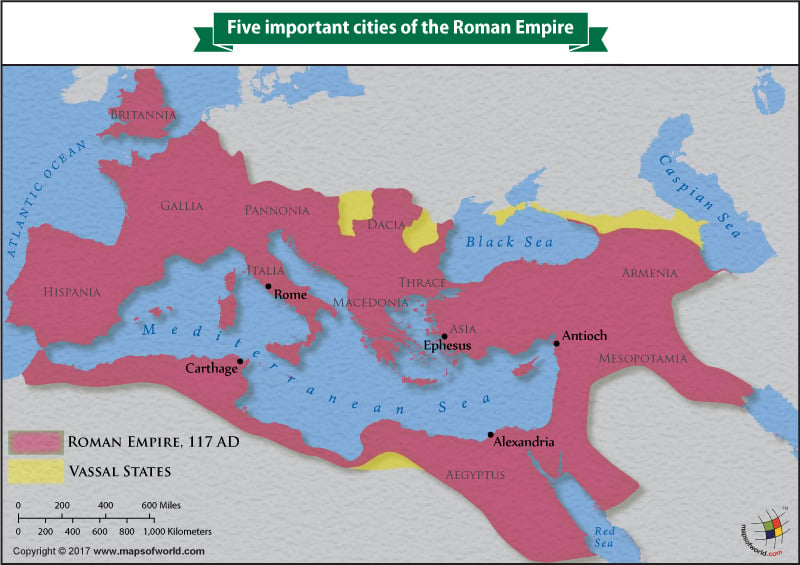What were the five important cities of the Roman Empire?
The Roman Empire stretched around the Mediterranean Sea, holding several large territories in northern Africa, western Asia, and southern Europe. Considered as one of the greatest empires in Western Civilization, it had a profound influence on western culture. The Empire began with Augustus Caesar as the first ruler, ended with Romulus Augustus (in the west) and Constantine XI (in the east) as its last rulers.
The Roman Empire had a complex social structure and the four classes that existed in the society were: Roman citizens, Greeks, Metropolites and the Rural Egyptians. This social structure not only influenced the way of taxation, but also the justice system. People belonging to higher social strata paid lesser taxes and faced lesser punishment than the people of lower strata.
Several Roman colonies emerged as important commercial and cultural centers, but the five major cities were as follows:
Rome
The first capital of the Roman Empire, Rome was founded by King Romulus and his twin brother Remus in 753 BC. After around 500 republic years, Rome was invaded by Julius Ceaser, who established his dictatorship in 45 B.C, but was assassinated in 44 B.C. Thereby Augustus Caesar, Julius Caesar’s nephew, established his own rule in Rome along with the Senate. Rome being the largest city in the world during the Empire, saw significant infrastructural development in terms of roads and buildings, including the famous amphitheater, Colosseum. Under the Greek influence, Rome also flourished in the field of law and government.
Antioch
The city was founded by Seleucus I Nicator, one of Alexander the Great’s generals in 4th century BC. It held great military, cultural, and commercial importance for the Roman Empire. Owing to its size, it became the third largest city of the Empire and underwent significant urban development. Roman architectural influence is seen in the city in terms of theaters (for example Circus of Antioch), baths and so on. It also holds religious importance, as it was here that the followers of Jesus were called Christians.
Alexandria
The second largest and the wealthiest city of the Roman Empire, Alexandria was annexed by Augustus Caesar in 30 B.C., after he defeated Mark Antony and Cleopatra VII. The city had economic importance since it served as the largest port and major producer of grain for the Empire. Several reforms were introduced by the Roman Empire; including privatization in the field of trade, commerce, and land. Such administrative changes helped achieve a great level of efficiency and tax maximization.
Carthage
Founded by the Phoenician Queen Elissa in the year 814 BC, Carthage became the second city in the Roman Empire after the third Punic war between Carthage and Rome. Since Carthage was a great trading zone, Rome had an aim to expand its trading capabilities. This had led to conflict between the two. Punic wars helped Rome become an Empire by providing it wealth, training, and a navy. Carthage was completely destroyed during those wars and then rebuilt. After the death of Julius Caesar, it was made the capital of the African province. The city was both culturally and commercially important for the Empire. It is known to be emperors’ favorite city and Empire’s breadbasket.
Ephesus
Built in the 10th Century by Greek colonialists, Ephesus was also capital of Roman province of Asia. The city flourished under the Roman Empire, thereby becoming a major commercial center, and it also acquired governor’s seat. Several architectural contributions were made in this city including Temple of Artemis, recognized as one of the Seven Wonders of the Ancient World, and the Library of Celsus. The city was destroyed because of cruel Emperors, Goths and even an earthquake in 614 AD, but the ruins which still exist are popular tourist attractions even today.
The Roman Empire in its time was a very powerful economic, cultural, political and military force in the world. With an estimated 70 million people under its rule, it was one of the largest empires in history and the cities became major population centers.
Related Maps:



